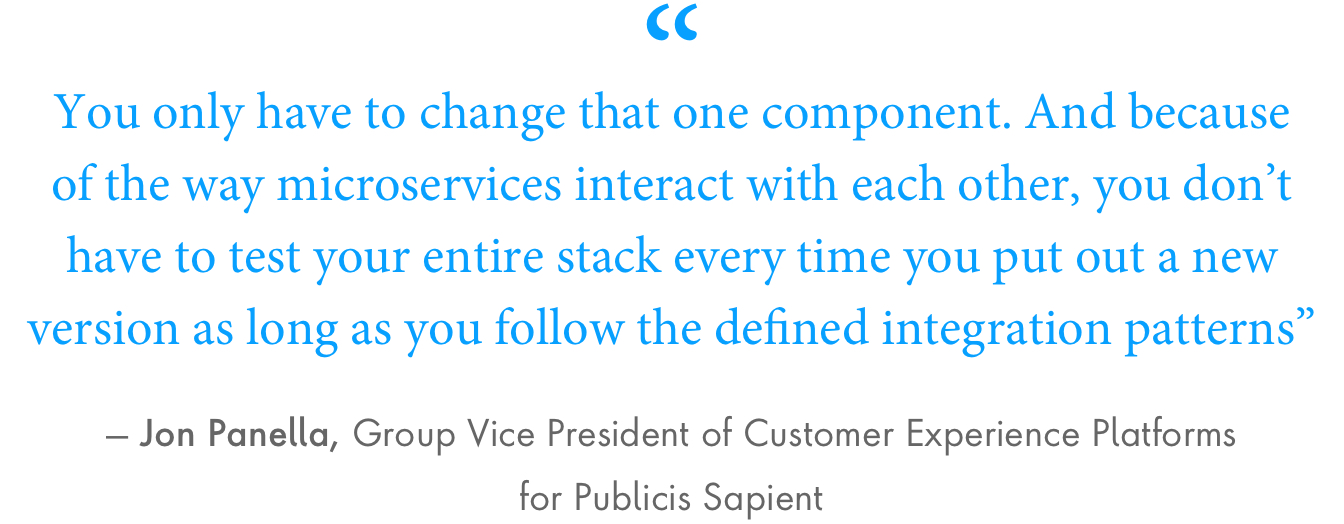
Solution
{{eyebrowContentTitle ? eyebrowContentTitle : activeTagName}}
Agentic Retail Network Agentic Retail Network Agentic Retail Network Agentic Retail Network
Forge the path toward powering your agentic retail enterprise.
Type in your prompt above or try one of these suggestions


Rapid Commerce
Rapid Commerce is a cloud-native solution based on microservices that gives companies an agile way to implement commerce in their environments. The adaptive architecture empowers retailers to continually adapt the customer experience – quickly and easily.

This solution grew out of a common problem in the realm of retail: there are popular monolithic solutions with certain capabilities and limitations that hinder agility and responsiveness and marketers have a heavy dependency on IT to be responsive to their customer needs.
In these cases, companies that want to distinguish themselves from the competition need to modify the code for these solutions. This puts them in a precarious position whenever there’s an upgrade and requires constant regression testing slowing down their time to market.
Rapid Commerce employs microservices that bundle loosely connected services in a singular application that can be adjusted at the individual capability level without disrupting the whole.

Retailers have been able to expand their online offerings because this solution allows them to test and publish individual components rather than the entire model.
Rapid Commerce, which is cloud and mobile first, was built with open-source tools so it doesn’t require a license for clients, reducing costs. It’s truly an accelerator – not a product – that enriches the customer experience to meet rising expectations.

Given that many companies are already dealing with technical debt, Publicis Sapient had a set of guiding principles to ensure this modular e-commerce architecture would truly be a modern IT solution:
![“We designed this around the idea of being able to containerize this, run it on the cloud and integrate it cleanly with your solutions,” Panella said. “Eventually when you get rid of that 20-year-old ERP [enterprise resource planning] this solution isn’t going to be impacted because it’s integrating in a standard way through a modern services architecture.”](/content/dam/ps-rebrand/insights/solutionsbatch2/Quote_22.jpg)
Rapid Commerce has already helped big-box retailers and other major chain stores. Its microservices technology has helped businesses outside of retail, including financial services, travel and hospitality, food and beverages, package delivery and telecommunications.
Our work in information-technology modernization has led to an average revenue increase of 14.7 percent because of the platform’s speed and customer service experiences.
With Rapid Commerce, we can deliver sustained customer value, stronger business relationships, greater capabilities support, measurable revenue results, better control of data and faster platform conversion. This is accomplished with a keen eye for the customer experience, business capability, technology enablement and execution.
More Solutions